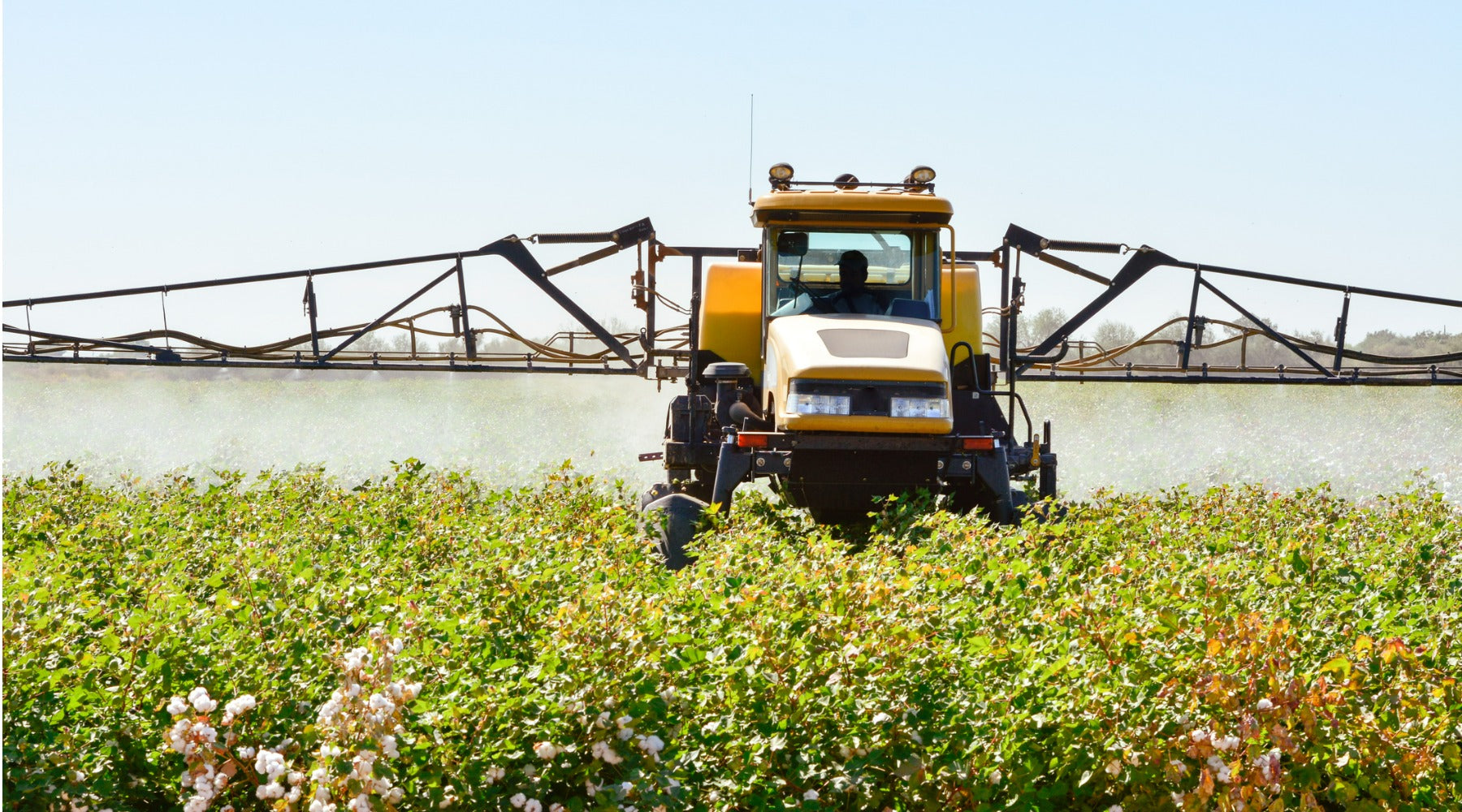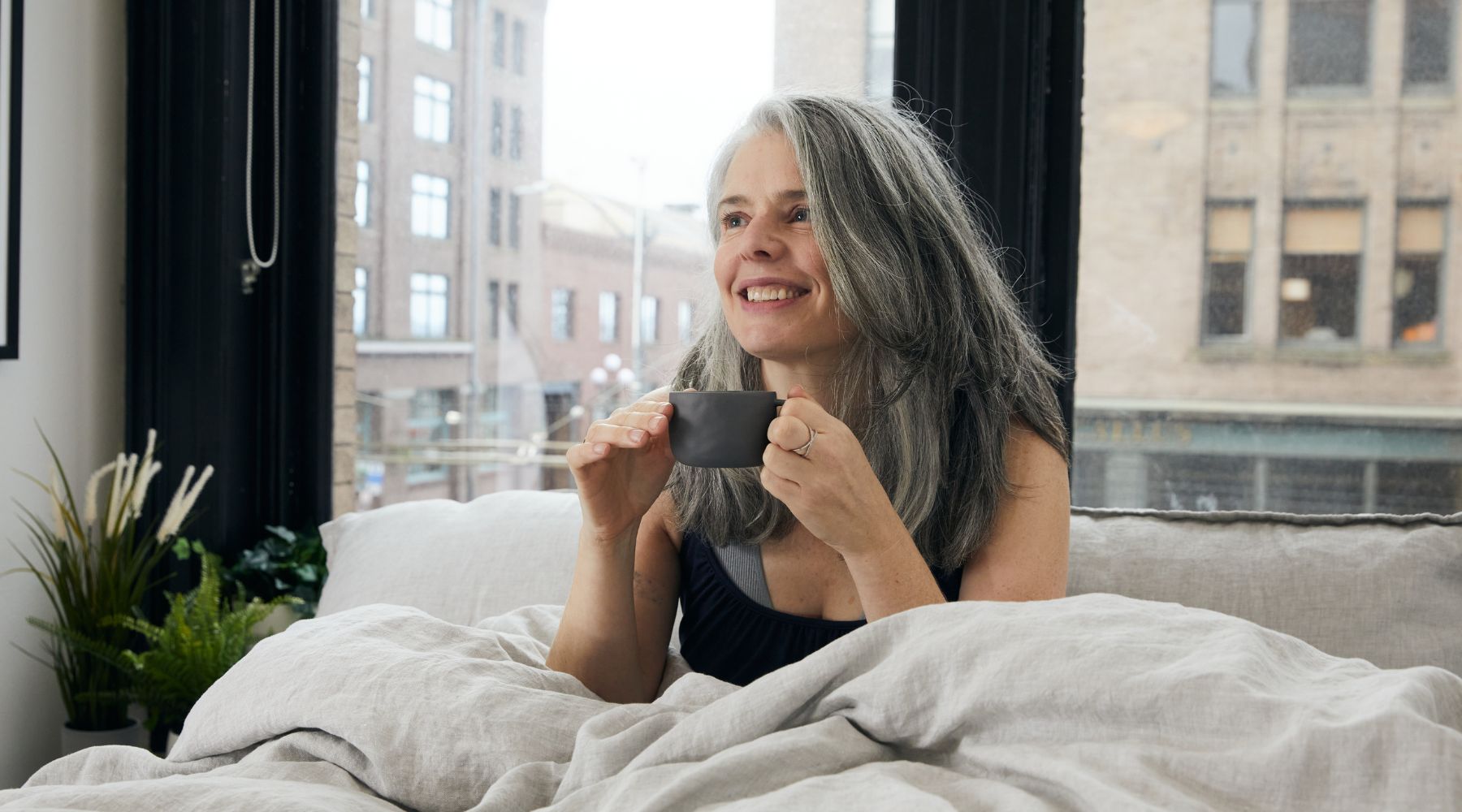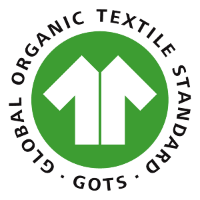
Unveiling the Chemistry of Bedding: A Deep Dive into Chemicals and the OEKO-TEX Certification
The amount of harmful chemicals used in traditional bedding may shock you, and for good reason. When we climb in bed at night, the last thing we want is sheets laden with chemicals against our skin. It’s impossible to see or feel these toxic substances, so we rely on independent testing organizations for help identifying which textiles are safe and which are not.
The OEKO-TEX Association conducts the most stringent testing, which is why we at The Modern Dane knew we wanted to use OEKO-TEX certified linen from day one. We take great pride in saying that each and every piece in our Danish-style bedding collection carries OEKO-TEX Standard 100 Class I certification—meaning all of our organic linen bedding products are free from harmful chemicals, and even safe for babies.
Wondering why other companies choose a different route? Harmful chemicals are used in bedding production for many reasons: to increase crop yield through fertilization or pest control, to add color, or to add a coating of softener or flame retardant. Safer alternatives are usually available but often more expensive; the use of these chemicals, therefore, is all about improving the bottom line for manufacturers.
Many of these chemicals are harmless in small quantities; some, like formaldehyde, even occur naturally in the body. The problem arises when manufacturers exceed safe levels, which is why it’s so important to consult an independent testing body such as OEKO-TEX. Below, we’ve listed some of the chemicals that may appear at unsafe levels in traditional bedding.
Pesticides Used in Cotton Production

Cotton, the world’s most popular bedding fabric, is made from a notoriously fragile and unsustainable crop . Cotton plants are vulnerable to bollworms, stink bugs, aphids, and thrips, meaning that farmers must use considerable volumes of pesticides to protect them. Cotton accounts for 4.7% of pesticide sales and 10% of insecticide sales globally, despite accounting for just 2.4% of cultivated land. Many of these pesticides are harmful to the environment and human health. Below are some of the most egregious examples:
-
Glyphosate
Glyphosate is an herbicide used by cotton farmers to kill weeds. In 2015, the International Agency for Research on Cancer (IARC) labelled glyphosate as “probably carcinogenic,” which has led many countries to limit its use in public spaces such as playgrounds. It’s highly water soluble, causing developmental problems in fish and amphibians.
-
Deltamethrin
Deltamethrin is an insecticide used to kill mites, ants, and weevils in cotton plantations—but is also highly toxic to honeybees and aquatic life. Exposure to deltamethrin in humans can cause dermatitis, tremors, and vomiting.
-
2,4-Dichlorophenoxyacetic acid
2,4-Dichlorophenoxyacetic acid (usually shortened to 2,4-D) is an herbicide used in cotton production. It was one of two ingredients in the notorious Agent Orange , used during the Vietnam War—though the intention was to kill crops, it caused an abnormally high incidence of cancers, miscarriages, and birth defects among those exposed to it. It is toxic to birds and invertebrates such as bees and earthworms.
Toxic Chemicals Used as Dyes

Artificial dyes are used to create brightly colored bedding. Unfortunately, these dyes often contain chemicals that are harmful to both humans and the environment:
-
Heavy metals
Many dyes used in bedding contain toxic heavy metals such as lead. In 2018, a Harvard study found a correlation between Alaska Airlines flight attendant health complaints—including rashes, shortness of breath, and blurred vision—and the introduction of new polyester uniforms in 2011. An analysis of the uniforms discovered lead, arsenic, cobalt, and antimony.
-
Formaldehyde
Formaldehyde, often used in the production of dyes, is produced in small amounts in the human body, and occurs naturally in some fruits. At these levels, it’s harmless—but when textile manufacturers exceed safe levels, formaldehyde in bedding can cause skin irritation and contact dermatitis.
At The Modern Dane, we steer well clear of these chemicals when we produce our nature-inspired organic linen duvet covers. Featuring flora and fauna native to Scandinavia, our printed duvet covers are also garment washed before they arrive at your door, meaning they are super soft right out of the box. And if solid colors are more your thing, not to worry—these beautiful, deep colors are also created without chemical-heavy artificial dyes.
Finishing Agents and the Risks They Pose

Finishing agents are the chemicals used after a textile has been manufactured but before it is cut and sewn to make bedding. These usually have practical benefits, such as softening or protection. Not all finishing agents are harmful but many are, such as:
-
PFAs (“forever chemicals”)
Perfluoroalkyls and polyfluoroalkyls (PFAs) are known as “forever chemicals” as they’re virtually indestructible and do not break down in the environment. They’ve been linked to a host of health problems including cancer, fertility issues, liver damage, and thyroid disease. Worryingly, they’re also frequently used in bedding to make it water- and stain-resistant.
-
Alkylphenols
Chemical softeners may contain alkylphenols, which work as an emulsifier (a chemical that helps other chemicals to mix). Alkylphenols are toxic to aquatic life and have been associated with a higher risk of breast cancer.
-
Flame Retardant Substances
Some bedding is treated with flame retardant substances to prevent it from catching fire (e.g. from burning cigarette ash). Unfortunately, flame retardants often include chemicals such as antimony trioxide (a carcinogen), DecaBDE (an endocrine disruptor), and boric acid (a poison).
How OEKO-TEX Certification Can Help You Identify Safer Products
The OEKO-TEX certification provides the ultimate benchmark for textile manufacturers, and in turn helps assure customers of which products are truly safe.
At The Modern Dane, we exclusively use OEKO-TEX certified linen, meaning every item within The Modern Dane bedding collection guarantees a chemical-free sleeping environment. Creating bedding products that are good for you and good for the earth is a huge part of our mission, and utilizing OEKO-TEX certified linen is very much in line with this.

The OEKO-TEX Association was founded by the German Hohenstein Institute and the Austrian Textile Research Institute in 1992, with headquarters in Zurich, Switzerland. Today, it’s a union of 17 independent textile research and testing institutes worldwide.
To obtain OEKO-TEX certification, companies must submit samples of their product for testing in one of these institutes. It’s not enough to just test the fabric—OEKO-TEX must test the whole garment, including fastenings! At The Modern Dane, we submit every part of our organic linen bedding: fabric, buttons, corner ties, and the thread used for stitching.
There are hundreds of restricted chemicals on the OEKO-TEX list , including all the chemicals we’ve mentioned above. It goes much further than government-mandated lists, as it includes many chemicals that are unregulated but still potentially harmful. If the product exceeds safe levels for even one of these chemicals, it won’t receive certification.
What Do the Different Classes Mean?
The OEKO-TEX Standard 100 certification has four product classes:
- Class I: Products for babies (up to the age of 36 months)
- Class II: Products with direct contact to skin (e.g. shirts, underwear, bedding)
- Class III: Products without direct contact to skin (e.g. stuffings)
- Class IV: Decoration material (e.g. curtains, tablecloths)
Generally, there is not much difference across the classes—the standards for even Class IV products are highly rigorous. But there are small discrepancies in certain categories: for example, up to 4 milligrams of nickel per kilogram are permitted for Class II-IV products but only 1 mg/kg is permitted in Class I products.
At The Modern Dane, we’re proud to say that all our organic linen bedding products—from our Scandinavian-style duvet covers to our pillowcases and fitted sheets—carry OEKO-TEX Standard 100 Class I certification. This means that they are completely safe for every member of your family—even the littlest ones.
Did any of our facts about chemicals shock you? Do you buy OEKO-TEX certified products? Let us know on Instagram, Pinterest, Facebook or Twitter!








